Rajput Painting of India

The Indian sub-continent had a very rich tradition of miniature painting that was not only tied to kings, queens and lords of different kingdoms of the Indian sub-continent, but also had a strong connection with the architectural forms of the temples, mosques, palaces, and courtyards of the region. Kings and lords facilitated painting to record their deeds (though at times their misdeeds were recorded too) and the intricate patterns of architecture repeatedly appeared in the miniature paintings.
The very first specimens of painting that have survived in the recorded history of India belong to the Ajanta caves dated 452-500 C.E. These paintings are depictions of different Buddhist tales called Jatakas. The later tradition worked with perishable materials that did not survive, and we have very little information about the art of painting till the 13th century.
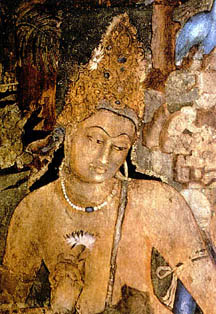
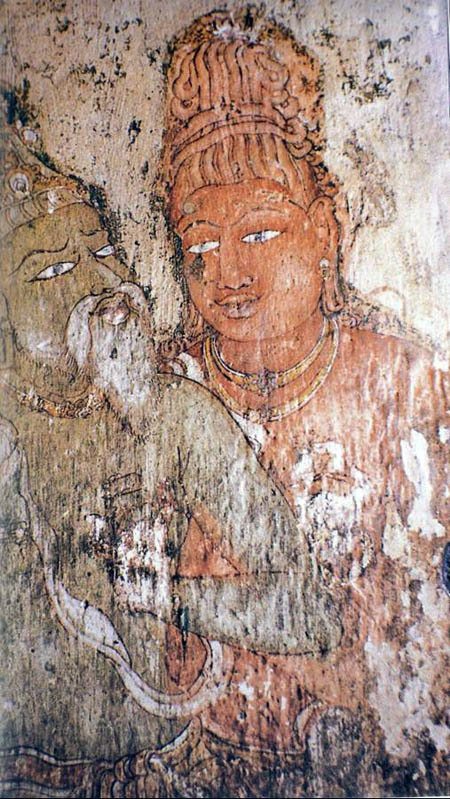
Cave 1, Ajanta, Bodhisattva, Rajarajeshvara Temple, Tanjavur,
462-500 C.E 1010 C.E
Jain manuscripts of the 13th and 14th centuries depict scenes of Mahivira’s life (the founder of the Jain religion). In the 15th century, Rajput states of Western India developed a painting style that evolved from these miniature paintings of Jain manuscripts. The best specimens of early Rajput painting belong to the mid-sixteenth century illustrated manuscript Gita Govinda. The artist painted figures against a shallow background of somewhat solid areas of intense red, blue and black. The background has stylized trees with enlarged leaves upon which larger-than-life birds are resting. Figures in strict profiles that were the hallmark of Jain manuscripts can also be seen in these early Rajput paintings. In the 1650’s Rajput artist Sahibdin worked on the manuscript of the Hindu holy book Ramayana and took the Rajput style of painting to its perfection. He created bold areas of saturated color with blooming flowers and highly stylized figures in profile. Sahibidin ignored the predominant Mughal style of painting of that era and relied on elements that came directly from the Rajput painting.

Krishna and the Gopis, Rajput (Mewar)
watercolor on paper, 1550
Mughal painting evolved from the traditional Persian miniature painting. It was not narrative in comparison to Rajput painting. Rajput paintings do not adhere to empirical reality, whereas Mughal paintings are realistic; kings, queens and ministers of courts were represented in realistic settings depicting specific events in time. Mughal paintings show spatial depth to set a scene, whereas Rajput paintings often place figures and architecture within a flat picture plane. The colors used in Rajput paintings are brighter and bolder than those used in Mughal painting. Moreover, the gestures and postures used in Rajput paintings are more stylized than those found in the art of the Mughal court.


Rajput Mughal
When India became a colony of the British Empire, the art of miniature painting in general and Rajput painting in particular receded into the background and Western art, with its larger representation of landscapes and portraits, came to the forefront of the contemporary art world. But many artists of the Indian sub-continent who were trained in the western tradition of painting used stylized forms of Rajput and Mughal miniatures in art; Abanindranath Tagore, Abdur Rahman Chughtai and Ravi Shankar are some of the artists that incorporated elements of Indian miniature in their painting.
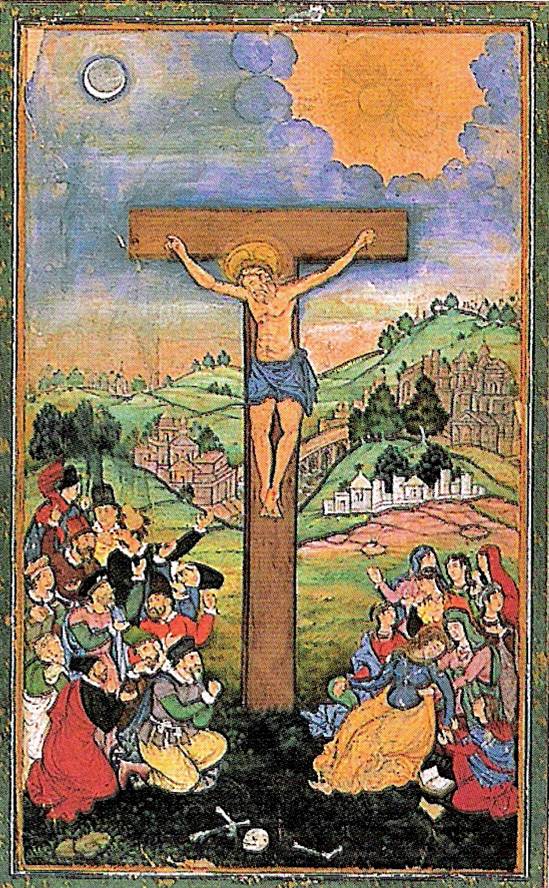
The Crucifixion,
Watercolor on paper, 1590
In addressing the issues of identity and embracing the diverse heritage of the Indian sub-continent, South Asian art has come a long way from the nationalist and revivalist attempts to search for identity in pre-Colonial cultural roots to synchronizing Western traditions of art and South Asian cultural heritage to depict the outer physical world and inner emotional milieu.
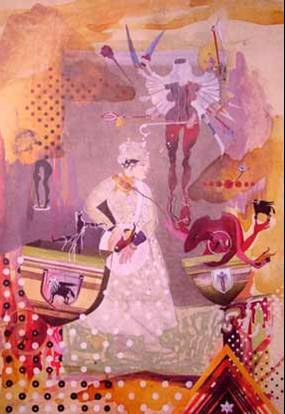
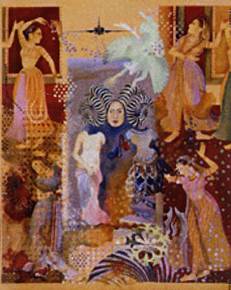

https://imranomer.com/home/197-2/

Comments
Post a Comment